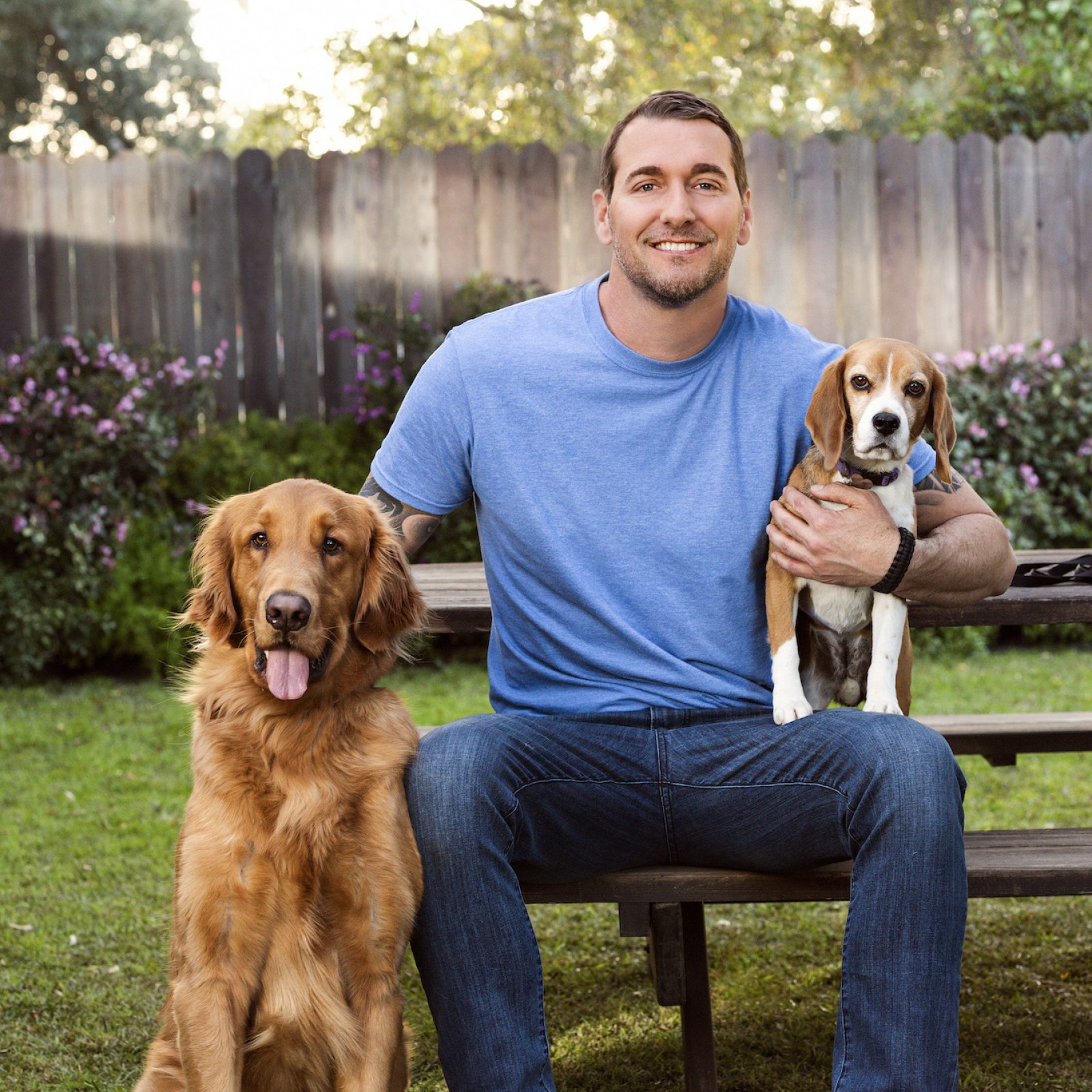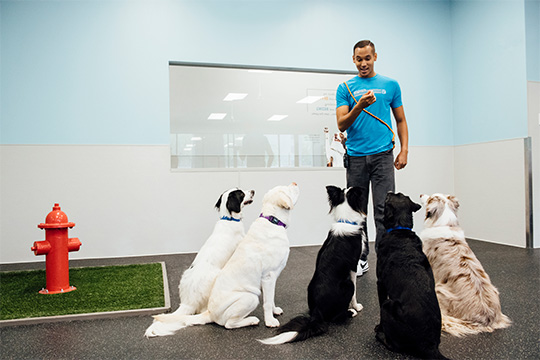Master Dog Training at Home with These Simple Techniques and Tools
Master Dog Training at Home with These Simple Techniques and Tools
Blog Article
Newbie's Overview to Effective Pet Training at Home
Successfully training a dog in the house calls for a nuanced understanding of canine actions and reliable communication techniques. Developing clear training objectives, making use of premium incentives, and keeping uniformity throughout family members are vital elements. Moreover, integrating training right into everyday regimens can boost both engagement and retention. Many beginner fitness instructors experience obstacles that may impede development. To navigate these complexities properly, it's important to discover several essential elements that can transform your strategy and bring about an unified relationship with your pet dog. What fundamental principles should every novice grip to guarantee success?
Understanding Pet Actions
Understanding canine actions is crucial for effective training and fostering a harmonious connection between people and their canine companions. Pet dogs communicate largely via body movement, vocalizations, and facial expressions, making it vital for owners to analyze these signals precisely. Recognizing habits such as tail wagging, grumbling, or shrinking can provide understandings into a pet dog's mood and purposes.

Usual behavior problems, such as aggressiveness, anxiousness, or excessive barking, often originate from misconceptions or unmet requirements. Observing and resolving these concerns promptly can prevent escalation and guarantee a favorable training experience. By cultivating a deep understanding of canine behavior, owners can customize their training techniques to suit their canine companions, eventually resulting in a happy and mannerly pet dog.
Crucial Training Tools
A fully equipped training area can substantially boost the effectiveness of canine training in the house. Vital training devices ensure that both the canine and the trainer can involve in efficient sessions that promote learning and bonding.

Buying a durable leash and a comfy, well-fitting collar or harness is vital for safety and security and control. These devices assist develop limits and make certain the canine stays safe during training. Additionally, a marked training area, devoid of disturbances, aids focus for both the pet dog and the instructor.
Educating help such as training pads, cones, or agility equipment can likewise improve the experience by presenting variety and challenges. Having a notebook or electronic application for tracking development can be vital, allowing you to note successes and areas for enhancement. Utilizing these important tools will develop a positive training atmosphere and lay the foundation for effective knowing.
Producing a Training Regimen
Establishing a constant training regimen is essential for reliable dog training in your home. A well-structured routine not only assists in reinforcing desired habits however likewise provides your pet with a complacency and predictability. To create an efficient training routine, start by identifying certain training goals, such as standard commands, chain strolling, or housebreaking.
Select a designated time every day for training sessions, preferably when your pet is sharp and receptive. Sessions should be short, around 5 to 15 minutes, to maintain focus and stop exhaustion. Uniformity in timing and setting will enhance your canine's knowing experience.
Incorporate training right into daily activities to reinforce abilities. Method commands throughout strolls or nourishment, which incorporates learning into all-natural regimens. Furthermore, remain versatile and readjust the regular as essential, fitting your pet's energy degrees and mood.
Positive Reinforcement Strategies
Positive support techniques are fundamental to efficient pet training, promoting wanted habits with incentives instead of punishment. This approach uses favorable stimulations, such as treats, praise, or play, to urge dogs to repeat particular actions. The keystone of this technique is timing; rewards need to be provided quickly complying with the desired habits to create a clear organization.
When implementing favorable support, it is necessary to pick incentives that are encouraging for your dog. High-value deals with, such as small pieces of hen or cheese, can be particularly effective throughout training sessions. In addition, varying the rewards can preserve your pet's interest and interest.
Beginning with easy commands, like "rest" or "remain," and slowly progression to more complicated jobs. Uniformity is essential; make certain that all member of the family utilize the same commands and reward systems to prevent complication.
In addition, it go to this web-site is vital to continue to be patient and stay clear of irritation. Dogs, like human beings, learn at their very own speed. By cultivating an encouraging training environment with favorable reinforcement, you can enhance your pet dog's discovering experience while enhancing the bond in between you and your furry buddy, preparing for successful training results.
Usual Educating Challenges
While training a pet in your home can be a rewarding experience, it typically features a browse around these guys set of common difficulties that can check both patience and uniformity. One prevalent issue is distraction. Pets may come to be quickly averted by noises, movements, or also fragrances in their setting, making it tough to keep their emphasis during training sessions.
An additional difficulty is disparity in commands and reinforcement. It can prevent and confuse the pet dog development if family members use different signs or rewards. Establishing a unified strategy is necessary for effective communication.
Additionally, pets can experience irritation or tension, specifically if they do not understand what is expected of them. This can result in undesirable habits, such as eating or barking.
Lastly, the timing of reinforcement is essential (Dog training). Delayed incentives can diminish the efficiency of favorable reinforcement, as canines might fall short to connect the behavior with the incentive
Getting over these difficulties needs dedication, clear communication, and a structured training plan. Acknowledging and attending to these common obstacles will pave the way for a much more successful and satisfying training experience in your home.
Verdict
In final thought, effective canine training at home demands an extensive understanding of canine habits and effective interaction methods. By developing clear training objectives about his and making use of high-grade treats alongside positive support, the training process ends up being a lot more gratifying for both the fitness instructor and the pet dog.
Developing a regular training regimen is crucial for efficient canine training at home.Positive support strategies are fundamental to efficient canine training, promoting wanted actions with incentives instead than punishment (Dog training). By promoting a supportive training atmosphere with positive support, you can improve your dog's knowing experience while enhancing the bond in between you and your furry friend, laying the groundwork for effective training outcomes
In final thought, successful dog training at home necessitates a detailed understanding of canine behavior and efficient communication methods. By establishing clear training objectives and making use of high-grade treats alongside favorable reinforcement, the training process becomes a lot more gratifying for both the fitness instructor and the canine.
Report this page